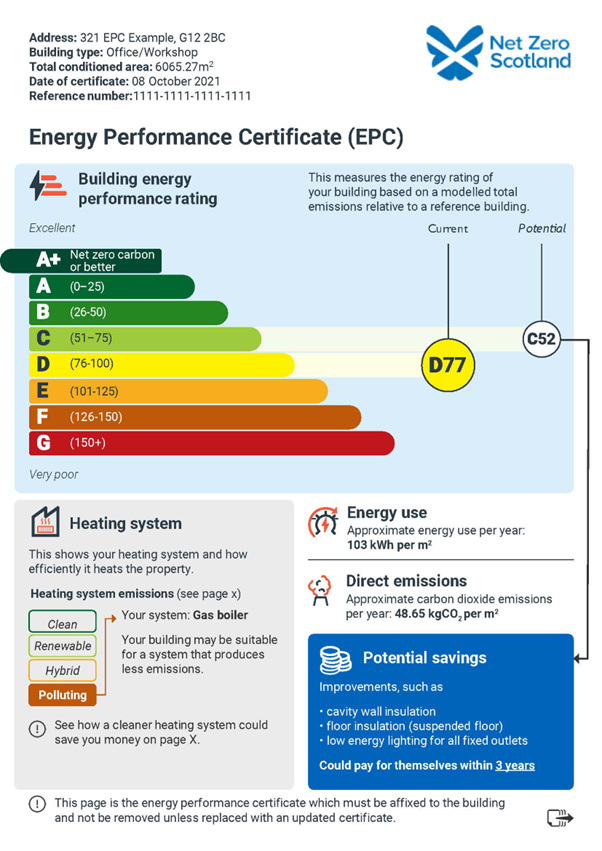Planned changes to Energy Performance Certificates (EPCs) are welcome but leave some questions unanswered
Author
Kirsty Johansson
Share this post
Good news is that domestic and non-domestic EPCs are both set to be revised though full alignment with UK measurement goes unaddressed
Scottish Government plans to reform Energy Performance Certificates (EPCs) by late 2026 have been met with a range of reactions, mostly positive, though some issues remain unanswered.
Critically, both domestic and non-domestic EPCs are included in the plan, a welcome change since non-domestic EPCs are often overlooked during legislative updates and methodology revisions.
The validity period for EPCs will reduce from 10 to 5 years, and the new digital EPC format will streamline access and provide upgrade simulations. While these are positive steps, there are some concerns about potential confusion, delays in implementation, and unresolved impacts on existing legislation regarding sub-standard properties.
Changes include new ratings for domestic EPCs: Heat Retention, which measures heat loss through walls, floors, and roofs; Heating System, which evaluates heating systems based on emissions, efficiency, and running costs; and a renamed Energy Cost Rating, formerly the headline rating, all of which aim to simplify EPCs by reducing jargon and offering clear guidance for improving homes.
Under the planned changes, the Heat Retention Rating will become the main headline figure on the domestic EPC, but this raises questions about how this shift will affect legislation that restricts the sale or lease of sub-standard properties based on their Energy Cost Rating. If this measure is now to be less prominent, it could lead to confusion.
A proposed digital format will streamline access to the online EPC register and allow users to simulate potential improvements after upgrades, though it is possible that such simulations may include heavy disclaimers, limiting their practical reliability.
Non-domestic EPCs will move to a “reference” model, aligning with the UK’s calculation methodology which compares a building’s performance to a defined reference building.
But while aligning with UK methodology is seen positively, there is inconsistency in rating scales. Scotland’s ratings will run from 0 to 100+, while the UK’s range is 0 to 150+. This discrepancy makes direct comparisons difficult and seems unnecessary.
UPDATE – The Scottish Government have revised the graphic in their consultation response to bring the Non-Domestic ratings into line with the rest of the UK (0-150+). This means that direct comparisons should be possible and will hopefully streamline the purchasing/lending process. Although there are still no Minimum Energy Efficiency Standards (MEES) in force in Scotland, it’s expected that will change.

Other updates include a proposal that heating systems will be categorized as Polluting, Hybrid, Renewable, or Clean, while the Direct Emissions Rating will stay but without a banding letter and the Energy Use figure and Primary Energy Rating will still be displayed, though the exact placement remains unclear.
The EPC Validity Period reduction ensures EPCs remain more accurate and relevant, though this still relies on triggers like property sales or leases. Expanding triggers to include significant alterations, such as insulation or heating upgrades, could improve EPC accuracy.
In addition, The Scottish Government plans to work with accreditation bodies to enhance training and auditing for assessors.
Calum Allmond is a Director and Head of Architectural and Energy Services at DM Hall Chartered Surveyors.
Back to News